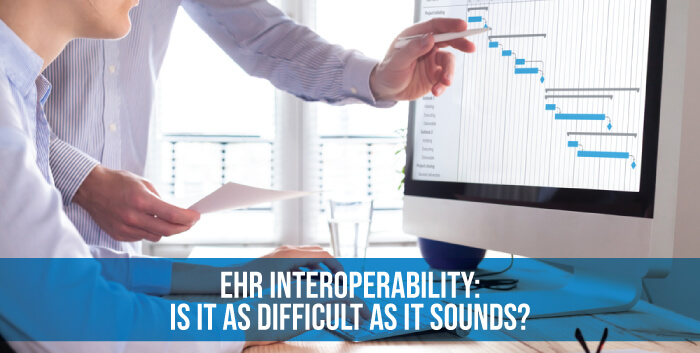
Key Takeaways:
- Interoperability is Critical: Despite challenges, EHR interoperability is key for better care coordination and achieving meaningful use.
- Three Levels of Interoperability: Foundational (data receipt), Structural (data transfer), and Semantic (full data exchange and use).
- Barriers: Customization, lack of standardization, and insufficient incentives slow progress toward seamless interoperability.
- Healthcare Impact: Better interoperability can improve patient outcomes, reduce errors, lower costs, and increase efficiency.
- Future Needs: Achieving interoperability requires standardization, government incentives, and collaboration across the industry.
Interoperability is one of the words EHR providers promote and sell. It is the structure or the standards that make it possible for HIE across different EHR portals by different caregivers and people in healthcare. This enables better care. However, most EHR software do not allow for complex connectivity. Many have claimed that interoperability is hard, and it is. Does that mean that it is unachievable? Well, the answer is it’s not impossible. EHR providers have incorporated levels of interoperability which means that the EHR systems are interoperable to a certain extent, and therefore, we’re advancing towards a standardized interoperability.Some doctors still prefer to use faxes mail reports and patient records to others in complicated cases. This is time consuming, wastes paper and is still preferred despite the fact that EHR allows for some transfer of information and has been in use since 2009. It was also emphasized by HITECH. To combat the time it takes for sending information this way and to allow for better flow of information, EHRs are interoperable. It is therefore important to figure out how EHR templates can be made more interoperable. One definite way that is possible is to increase interaction between EHR providers and practitioners.
Interoperability for EHR is Essential for Meaningful Use
To achieve meaningful use, which is a requirement for EHR providers now, the services have to be interoperable. That entails more people, or different systems accessing a patient’s information to come to an informed decision about their treatment in case it is a hard case, and also let the patient access their own records upon need. It also means, faster and more accurate data migration. It is believed that one way to make this possible is for different EHR providers to work together to achieve this. They would have to merge templates for different specialties and also understand how their competitors work. Overall this is hard to imagine. Firstly it is time consuming and a greater degree of transparency is required for two systems to perfectly align, which leaves them vulnerable. Secondly, the competition is tough as it is, and with different systems, it would affect one’s market share considerably.
Meaningful use itself has three important stages. The first stage entails that there should be a standardized format used across the board, which would mean stricter regulations on EHR providers. They would need similar templates for the same specialty to track clinical conditions and allow for transfer if needed. If enforced, it would mean that medical practices will suffer if everyone begins to adhere their back-end to the new laws. There would also be a need to allow for national access for rare or complicated conditions that require multiple experts to get together, and there would be an increased reporting of public health information and ensuring that quality measures take place. Though this sounds perfect, it also means information will be accessible for all.
Meaningful Use Stage 2 entails HIE to be exchanged fast and efficiently with accuracy, and more requirements for electronic prescriptions and integrating various lab results as well. Here is another tricky one; it needs to allow for sharing of patient care summaries in certain cases. This means that the patients’ data is not their own, and more encryptions might be needed if data is being transported across separate systems. Patients would also need to be given control over their own data. The third and final stage would need to show efficacy, and ensure improved health outcomes, and improve overall population health.
Inter Gateway for HIE
All this is not the job of interoperability which is only involved in the exchange of health information exchange across different EHR providers, but it is the only way to ensure meaningful use. Interoperability ensures excessive data being picked up from different sources. It takes long to verify this data, and ensure that it is correct. However, the good thing is that because healthcare has gone through a transformation, and that many operations are automated that it is easy to ensure accuracy and verifiability of information like scheduling and e-prescriptions or allowing for greater patient-control over their records.
Another interesting thing to denote is how EHRs have led to burnout despite the advancement and re-designed EHR templates according to specification and practitioner’s customization. The burnout cannot be overcome until interoperability is bettered. Dr Julia Adler-Milstein says; if it were easy to achieve perfect interoperability, it would have been implemented by now. EHR providers have done a lot to achieve interoperability so they are not driven out of the competition. One of the reasons why it is hard is that all parties that are involved in making a practice work and succeed need to follow the same structures and standards, and confidentiality claims. This also means that more standards will have to be enforced by law for everyone to make their systems interoperable. It shouldn’t be a tool to be market competitive.
Stress-free Data Transfer
When different segments of the same structure have differing interfaces it can be very difficult to achieve interoperability. When the interface differs, data transfer is not as smooth. For larger practices this is even more problematic because they need time and money to set up similar interfaces across all practices affiliated. The idea of interoperability is that information should be easily accessible regardless of the software used. Stage 2 and 3 of meaningful use ensures that patient data with other clinicians who use EHR.
Lack of incentives for EHR providers to make systems interoperable is part of the problem. Another problem is that EHR needs should be met first, HIE is second priority. These lack of incentives are part of the problem. Another large concern is that there are so many government-certified EHR products in use, and every one of them has separate terms, specifications and functionalities. Some of these are even specialty-focused. Adhering to the same standards for HIE seems close to impossible given the variations of the products and other complexities, which affects sharing of information.
Stages of Interoperability
We just talked about specialty-focused EHRs. Many EHR systems are not interoperable because of customization. The idea is to make EHRs simple, easy and hassle-free for practitioners. It is not possible for them to have other functionalities while being unique. This is a complex task. Any two EHR systems must use standard codes to store data for them to be perfectly interoperable. Three kinds of interoperability has been defined:
- Foundational: Your EHR only needs to receive data, and not understand or interpret the information.
- Structural: Data needs to be transferred and interpreted.
- Semantic: Two or more systems can exchange information where it can be used.
In the near future, it may be that interoperability will be achieved and allow for reduction in fees, store patient information in one place and analyze and use the data collected. Interoperability also means improved healthcare, but it requires collective efforts. Physicians feel burdened by technology and meaningful use barriers, which consumes at least two hours of their time in EHR-related tasks. Hospital staff, physicians themselves, and those who will benefit from interoperability want it to happen quickly. It will ensure improved patient care, and therefore more patient traffic and increase in revenue, and it will reduce errors in medical work and lower costs. Many claim that the government should incentivize interoperability, and even break down silos in health information which hampers enriched healthcare.




More Stories
The Role of EHRs in Enhancing Patient Care and Safety
EHR Interoperability: Challenges and Solutions in 2025
The Impact of AI Listening Tools in Patient Care